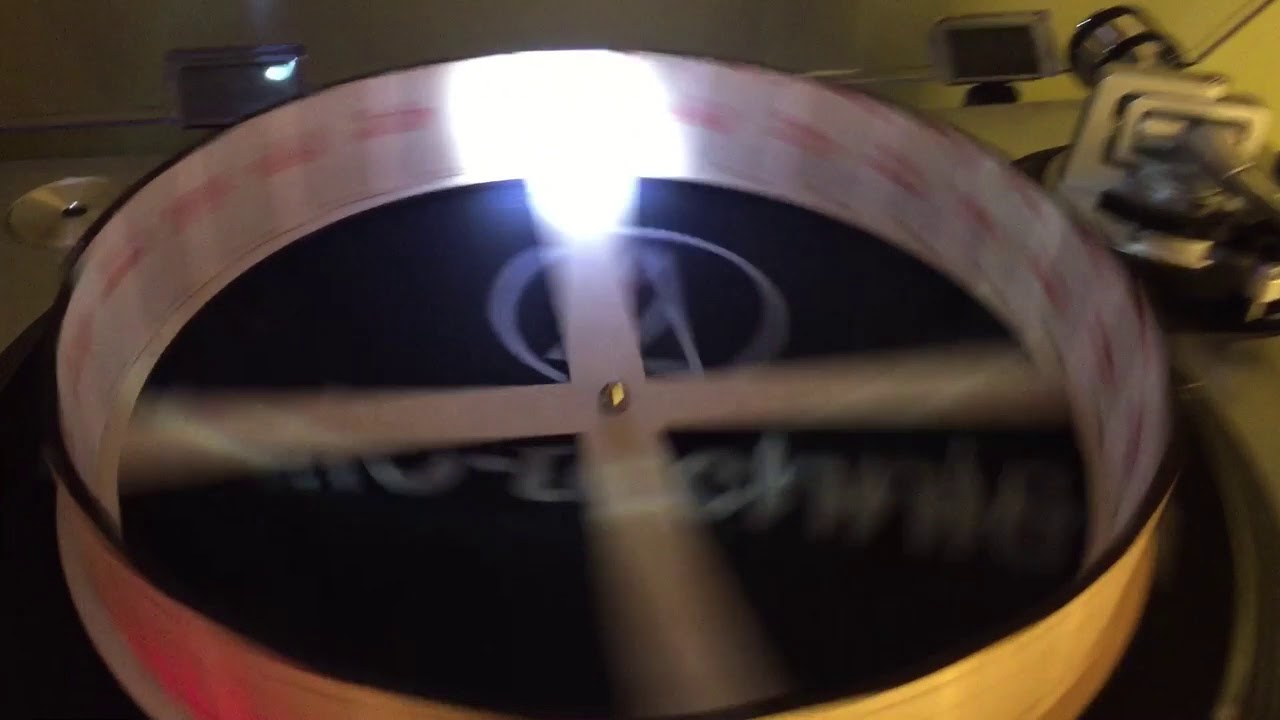And, there it is!
My animation choice (an outlined treatment of a Conway’s Life glider looping across the frame) turned out to be not great in terms of visibility, even after I took a colored pencil to it to create some more fill contrast, and the lighting in my living room this evening is dim enough to make for poor videography in general, but the concept is definitely there!
I’ll look into playing with some additional animation ideas in the next few days, to see what might work better for this kind of slightly smeary rotational treatment, and see if there’s any tweaks to the design that present themselves to me.
I used my turntable for rotation, but in principle this would work fine with just a pencil and a steady hand.
